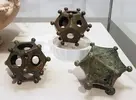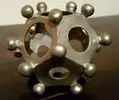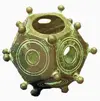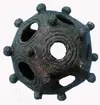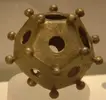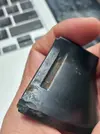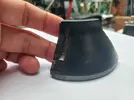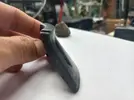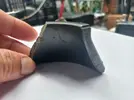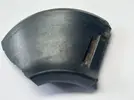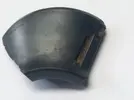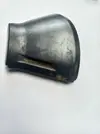Yes, exactly right. The coax is a poor man's Edwin Gray's tube collector. Does the same job. Ditto about your recommendation of powering the timefield with cold electricity. I experienced my first time anomaly with this setup. Cold electricity is a different animal for sure. Be careful when using the flyback in this circuit that you don't run it for too long. I've ruined some great flybacks that overheated. Five minutes is safe though. Long enough to perform experiments. I thought I might get into winding my own some day. If you can find an old black and white tv (the larger the better), their flybacks are the best. I have used an audio step-down transformer after the flyback and brought the voltage down to below 1000 volts so I could do measurements with a multimeter without letting the smoke out of it. (It is also useful for other experiments.) There are other ways to take measurements though, of course. I haven't tried powering electronic devices with the cold electricity. I would be interested to hear of your experiences with this.
I should also mention that I have recently switched over to li-ion supply instead of a car battery and I used to have to top up the car battery every so often, but the li-ion arrangement seems to stay topped up. Strange.
With my health problems getting worse, I'm way behind on circuits I want to build. The sleep deprivation is getting worse. I'll spend 12h in bed, but compared to a normal person, I only get about 3h of usable sleep. It's really hard on coherency and memory. I bought a pulse-ox sensor over a year ago that I still haven't hooked up yet.
My main interests in my tests are free energy and a time communicator... hopefully powered by free energy. Eventually I'd like to use a free energy setup to power my artificial ventilator I have to sleep with at night. Running it off batteries for more than a few minutes isn't practical. The time comms would give me a heads up on disasters that are about hit me again and again.
I've done some simple frequency testing on the ferrite flyback frames I've salvaged from old CRT's. They seem to respond ok from 50kHz to 100kHz depending on the ferrite material (which isn't labeled). I picked up some high speed ferrite cores for testing from digikey, but I haven't had a chance to wind them. Last year I picked up some 2 part epoxy casting resin and some magnetite powder (Fe3O4 powder, not the other powders that aren't magnetic) and cast a couple medium-large rings. One ring was from the powder, the other was from iron filings used in magnet demonstrations. Simple frequency tests on those were similar and were clean at 100kHz, and could maybe be pushed to 300kHz with some distortion.
From what I've researched, interesting responses might start around 100kHz, but 1MHz is better. Some of the time travel theories I've read suggest frequencies in the hundreds of MHz and into the GHz range. I can do simple circuits, but I'm not an RF designer. Someday I may look for high powered RF transmitter circuits and try one of those.
If you still have your burned out flyback transformers, you can probably salvage the ferrites. I broke my first one trying to get it out, but then I saw they used some hidden glue. If you've got a heat gun or hot air wand, you can crank it up and heat the ferrite and soften the glue. It's still hard to get out, but the rest of mine didn't break using that method. Just don't heat the ferrite too high as they are heat treated. The only flyback wire I was able to salvage was from a 1979 video monitor. The rest (somewhat newer) designs were all potted in epoxy (including the high voltage capacitors).
Winding your own flyback isn't hard. You just need to take into account the high voltage spikes. I heard it described that you can divide the output voltage by the number of turns to keep the voltage between each wire within its specs. Winding is really slow and tedius, so do it while you're watching TV or listening to music.
For my flyback controller, I'm going to use a microcontroller instead of letting it free run. I picked up a RPi Pico and an ARM based Arduino for testing. I'm not sure which one I'll end up using, but probably the faster one. Programming will be very simple. I'm going to use their high speed ADCs to measure the output voltage on a reservoir capacitor (probably the biggest ceramic I can get). If the voltage is lower than some level, it will trigger another flyback pulse. Using this method, I can somewhat adjust the output voltage and get it very high if need be. Since this is MCU controlled, I can also control the pulse width and duty cycle easily. Given your comment about overheating, I should probably add a thermistor for a safety cutoff.
Your lithium battery pack vs lead acid is interesting. I was planning on using lead acid with a loop back transformer leading to a trickle charge circuit. If I can ever get the time to build this, I may swap to lithium once everything is stable. I have fire concerns with lithium for initial prototyping.
For the time communicator, I want to try a delta time antenna (DTA). I've had some design tweak ideas I'd like to try. I think this one requires mid-MHz frequencies, though. I may not get anywhere with it. It would be nice if TF was still around.

